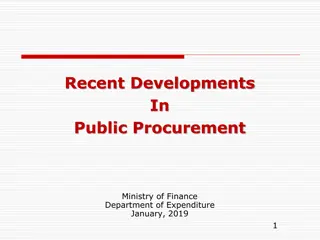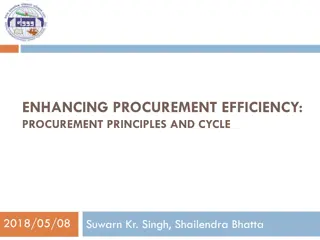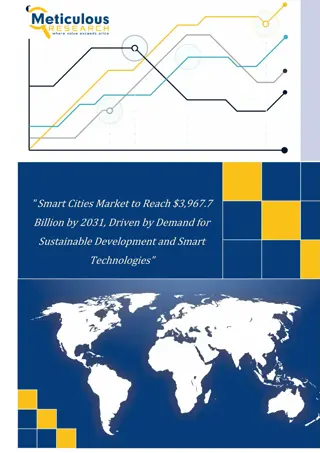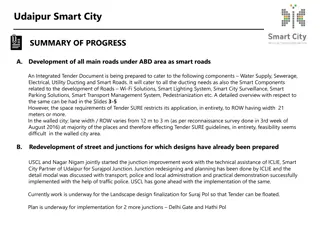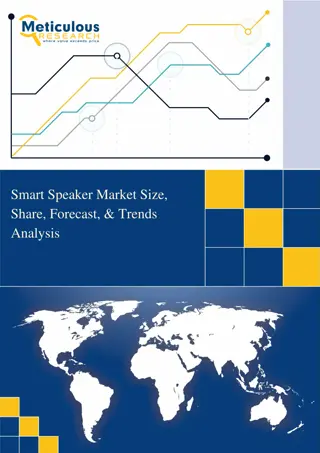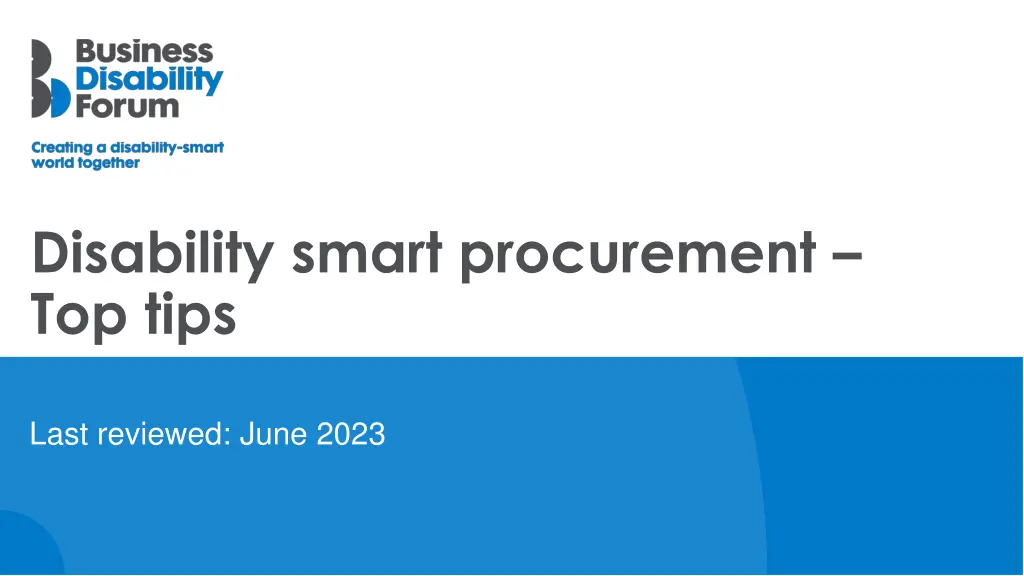
Smart Procurement Tips for Disability Inclusion
Learn the importance of disability-smart procurement and how to incorporate inclusive practices into your procurement process. Discover top tips, such as involving disabled users from the start, avoiding costly retrofits, and consulting diverse perspectives to enhance accessibility.
Download Presentation

Please find below an Image/Link to download the presentation.
The content on the website is provided AS IS for your information and personal use only. It may not be sold, licensed, or shared on other websites without obtaining consent from the author. If you encounter any issues during the download, it is possible that the publisher has removed the file from their server.
You are allowed to download the files provided on this website for personal or commercial use, subject to the condition that they are used lawfully. All files are the property of their respective owners.
The content on the website is provided AS IS for your information and personal use only. It may not be sold, licensed, or shared on other websites without obtaining consent from the author.
E N D
Presentation Transcript
Disability smart procurement Top tips Last reviewed: June 2023 1
Why does disability smart procurement matter? An estimated 1.3 billion people globally and one in five people in the UK have a disability. Disability smart procurement means making sure the products and services you procure meet the needs of all users, including those with disabilities. Considering the needs of disabled users at every stage of the procurement process from specification to service monitoring will help you to be disability smart in procurement. 2
Tip 1 Procuring an inclusive product or service from the outset is better than trying to retrofit for accessibility. 3 3
Tip 1 (continued) Considering the needs of disabled users at the beginning of the process will avoid expensive retrofit changes in the future (and possible legal claims for discrimination). 4
Tip 1 (continued further) Talk to disabled people before creating a specification. Include employee networks, customer groups and disability experts. 5
Tip 2 Before changing or upgrading an existing product or service, ask users with different disabilities: What barriers they currently face What accessibility features they value. 6 6
Tip 2 (continued) Ask users about the existing experience of a product or service. This will help you identify areas that need improving and existing accessibility features that need to be retained. For example: Ensuring that apps can be read by screen readers and that new security features do not make the product unusable for some disabled people. 7
Tip 2 (continued further) Ensure you consult people with different types of disabilities and none. Remember that not everyone identifies as being disabled but they might still experience barriers. For example, older people might not say they have sight loss or that they are Deaf, but may still have difficulty seeing or hearing. 8
Tip 3 Involve disabled users throughout the procurement process to get feedback on accessibility and usability at every stage from design and development to review and testing. 9 9
Tip 3 (continued) Including disabled users in user testing will help make sure the end product or service will work for disabled users. 10
Tip 3 (continued further) Ask disabled users with different disabilities to test and review the product or service. For example: Test websites and apps with assistive technology used by people with sight loss or dyslexia. Test equipment with buttons with people who can only use one hand or who have a tremor. Ask people with sight loss or neurodiverse condition like Autism about signage in a building. 11
Tip 4 Ask potential suppliers and developers for examples of accessible and inclusive products or services they have developed for other organisations. 12 12
Tip 4 (continued) Your name is on the door. Remember you are legally responsible for services or products delivered on your behalf. You need to ensure that outsourced suppliers know how to make inclusive products or services, and adjustments for disabled people. 13
Tip 4 (continued further) For example: Will outsourced catering providers read out menus and bring food to someone with sight loss in your canteen? Do your security staff know that they must allow assistance dogs to enter a building? Similarly, if a website developer creates a website for you that is inaccessible or difficult to use, it is to you that disabled users will complain. So, ensure the developer gets it right for you from the outset. 14
Tip 4 (continued even further) If your supplier or developer does not have examples, think about whether you can help them to develop their expertise by working with you on creating an inclusive and accessible product or service. This could be your way of helping others in the future. 15
Tip 5 Show your commitment to disability smart procurement with a message from a senior executive and share with colleagues. 16 16
Tip 5 (continued) Create buy in and commitment at all levels with a clear message from a senior executive who can clearly state the importance of inclusive procurement for your business. 17
Contact us Business Disability Forum businessdisabilityforum.org.uk E: T: 18


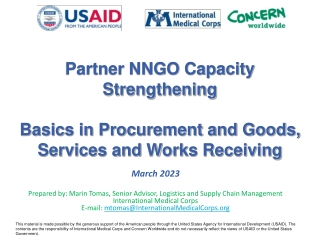



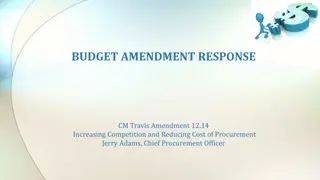
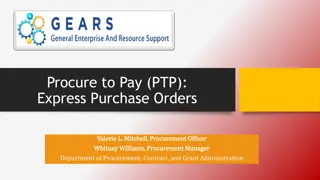

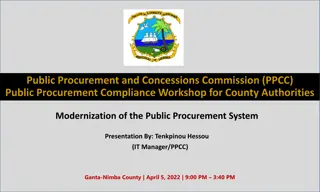
![Comprehensive Overview of Corruption Watch Submission on Public Procurement Bill [B18B-2023]](/thumb/138344/comprehensive-overview-of-corruption-watch-submission-on-public-procurement-bill-b18b-2023.jpg)

